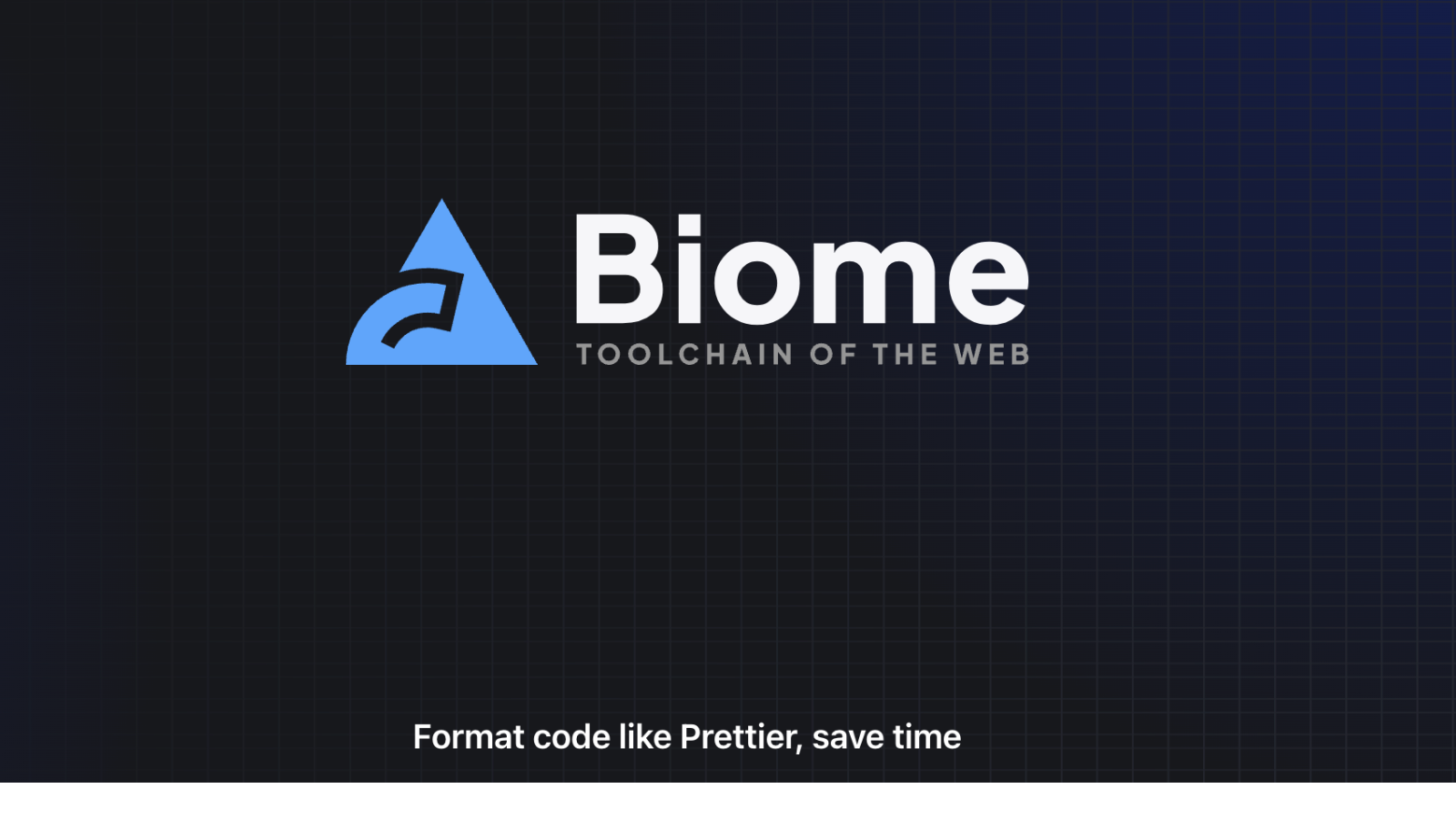Biome.js: A Promising Alternative to ESLint?
 Atharva Mulgund
Atharva Mulgund
When it comes to JavaScript and TypeScript development, tools like ESLint have long been the standard for linting, ensuring code quality, and enforcing best practices. However, the JavaScript ecosystem is evolving, and new tools are challenging the status quo. One such tool is Biome.js, which promises to simplify and speed up the development process.
But is Biome.js a perfect alternative to ESLint? Let’s dive deep and find out.
What is Biome.js?
Biome.js is a modern toolchain for JavaScript and TypeScript that combines several functionalities into a single package. Developed to reduce the complexity of managing multiple tools, Biome aims to replace:
ESLint (linting)
Prettier (formatting)
Terser (minification)
Babel (some transformations)
Key Features of Biome.js:
Linting: Detects code issues and enforces coding standards.
Formatting: Formats code to maintain consistency.
Bundling & Minification: Optimizes code for production.
Performance: Written in Rust, it is designed to be much faster than JavaScript-based tools.
Biome.js vs. ESLint
| Aspect | Biome.js | ESLint |
| Purpose | All-in-one tool (linting, formatting, bundling) | Dedicated linter |
| Performance | Extremely fast (Rust-based) | Slower (Node.js-based) |
| Rule Customization | Limited, predefined rules | Highly customizable |
| Plugins | Minimal plugin support | Extensive plugin ecosystem |
| Community | New, small community | Large, mature community |
| Integration | Limited ecosystem integrations | Seamless integration with most tools |
| Config Complexity | Simpler setup (opinionated defaults) | More complex (customizable setups) |
Advantages of Biome.js
Blazing Performance
Biome.js is written in Rust, a systems programming language known for its speed and efficiency. Compared to JavaScript-based tools like ESLint and Prettier, Biome performs tasks significantly faster, especially in large projects.All-in-One Solution
Instead of relying on multiple tools like ESLint (linting), Prettier (formatting), and Terser (minification), Biome combines these capabilities. This reduces the need for separate configurations and dependencies.Simpler Setup
Biome comes with sensible defaults, making it ideal for smaller projects or teams that don’t want to spend time customizing extensive linting rules.Modern Approach
Biome embraces modern JavaScript and TypeScript practices, and its opinionated design ensures fewer debates about configuration within teams.
Challenges with Biome.js
Limited Customization
Biome is not as customizable as ESLint. For projects that require specific linting rules or integrations with custom workflows, Biome might feel restrictive.Smaller Ecosystem
ESLint has a vast ecosystem with plugins for frameworks like React, Vue, and Angular. Biome, being newer, does not yet support such a wide range of plugins or integrations.Immature Community
While Biome shows promise, it lacks the robust community support that tools like ESLint enjoy. Troubleshooting or finding solutions for edge cases might be more challenging.Not Fully a Replacement
Biome can handle basic linting and formatting, but for advanced configurations or projects with complex needs, ESLint still reigns supreme.
When to Use Biome.js?
Ideal Use Cases:
Small to Medium Projects: If your project doesn’t have complex linting or formatting requirements, Biome can streamline your workflow.
Performance-Critical Projects: For projects with large codebases, Biome’s speed can save significant time.
New Projects: If you’re starting fresh, Biome’s all-in-one approach can simplify your setup.
Avoid Biome If:
You need highly customized linting rules.
You rely heavily on ESLint plugins or custom configurations.
Your team already has a well-established toolchain that integrates ESLint.
Example Comparison
ESLint Setup (with Prettier):
{
"eslintConfig": {
"extends": ["eslint:recommended", "plugin:react/recommended"],
"plugins": ["react", "prettier"],
"rules": {
"react/prop-types": "off",
"prettier/prettier": "error"
}
}
}
Biome Setup:
{
"biome": {
"formatter": {
"lineWidth": 80
}
}
}
Biome’s configuration is simpler but less flexible compared to ESLint.
The Future of Biome.js
Biome has the potential to disrupt the JavaScript tooling ecosystem, thanks to its speed and simplicity. However, it still has a long way to go before it can replace ESLint entirely, especially in large, complex projects.
Roadmap to Watch For:
Expanding plugin support for frameworks like React and Vue.
Improving customization options for linting rules.
Building a larger community to drive adoption and innovation.
Conclusion
Biome.js is a promising alternative to ESLint, especially for developers looking for a faster, simpler toolchain. While it’s not yet a perfect replacement for ESLint, it could be the right choice for certain use cases. As the tool matures, it may well become a serious contender for widespread adoption.
If you’re starting a new project or feel bogged down by the complexity of existing tools, Biome is worth a try. However, for seasoned teams with specific needs, sticking with ESLint for now is a safer choice.
Subscribe to my newsletter
Read articles from Atharva Mulgund directly inside your inbox. Subscribe to the newsletter, and don't miss out.
Written by

Atharva Mulgund
Atharva Mulgund
Software Developer| Passionate about MERN | React.js | Angular | Javascript | Typescript